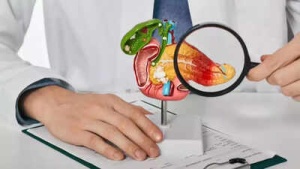The recent, sudden passing of Indian actress Shefali Jariwala has sparked widespread concern and highlighted a troubling trend: the increasing incidence of sudden cardiac arrest (SCA) in seemingly healthy, middle-aged women. While the official cause of Jariwala's death awaits confirmation, preliminary reports point to cardiac arrest, prompting a critical examination of this growing health issue.

Sudden cardiac death, or SCD, was once considered a rare occurrence, especially among young adults. However, its increasing prevalence, particularly in India, demands attention from the medical community. Cardiovascular diseases are responsible for approximately 28% of all deaths in India, with nearly 10% of these deaths attributed to SCD. A concerning number of these fatalities occur in individuals between the ages of 30 and 50.
India's rapid socioeconomic transformation has led to significant lifestyle changes, including:
These factors contribute to a rise in hypertension, obesity, diabetes, and coronary artery disease, all of which are major risk factors for SCD.
While historically more prevalent in men, recent research highlights the unique risks faced by women. Unlike men, women who experience SCD often have no prior cardiac diagnoses. Structural abnormalities, such as myocardial scarring and ischemic heart disease, frequently go undetected during their lives and are only identified during post-mortem examinations. Furthermore, many women do not exhibit typical warning signs like chest pain or ECG abnormalities, making early detection challenging.
Women in their 40s and 50s face a silent but serious threat from underlying cardiac conditions. In younger populations, SCD is often linked to inherited or electrical disorders like:
These conditions may remain asymptomatic until a fatal arrhythmia occurs. Additional factors, such as left ventricular hypertrophy, obesity, and myocardial fibrosis, can increase vulnerability in this age group.
The progression of myocardial scarring and fibrosis can be attributed to:
Conditions like Myocardial Infarction with Non-Obstructive Coronary Arteries (MINOCA), which are more prevalent in younger women, often leave no trace in autopsies, further complicating diagnosis.
Stress also plays a significant role. Takutsobo cardiomyopathy (Broken Heart Syndrome), or stress-induced cardiomyopathy, is a major cause of SCD in women who multitask and experience high levels of emotional stress. In Shefali's case, personal struggles related to divorce, anxiety, depression, and epilepsy may have intersected with her cardiovascular health. Psychiatric medications, particularly those that prolong the QT interval, have also been linked to an increased risk of SCD.
Despite the seriousness of the issue, women are often underrepresented in preventive heart care. Symptoms like fatigue, palpitations, or breathlessness are frequently dismissed or misattributed, leading to delays in critical intervention. While heart attacks are caused by blocked arteries, cardiac arrest results from electrical disturbances that cause the heart to stop suddenly. Immediate CPR and defibrillation are often the only life-saving measures, emphasizing the importance of early risk identification.
Medical experts are advocating for more targeted public health strategies. It is essential to improve early screening tools tailored to women, particularly during perimenopause when cardiac risks increase.
The tragic passing of Shefali Jariwala is more than a moment of grief; it is a rallying cry for change. Her death highlights an overlooked health crisis and the urgent need for systemic improvements in how women's heart health is addressed.
Shefali Jariwala captivated audiences with her screen presence. Following her untimely death, she may be remembered as a symbol of awareness, a reminder that the heart’s silence can be fatal, and that women's cardiac health demands immediate attention, investment, and action.
Newer articles
Older articles
 New Zealand Cricket Announces Packed 2025-26 Home Summer Against Cricket Giants
New Zealand Cricket Announces Packed 2025-26 Home Summer Against Cricket Giants
 Ayesha Shroff’s REACTS to influencer telling her son, Tiger Shroff, to stop acting’: 'And you are who exactly'
Ayesha Shroff’s REACTS to influencer telling her son, Tiger Shroff, to stop acting’: 'And you are who exactly'
 Vitamin D deficiency can increase the risk of pancreatic cancer; know key symptoms
Vitamin D deficiency can increase the risk of pancreatic cancer; know key symptoms
 India Poised to Unleash First Dengue Vaccine as Phase 3 Trials Wrap Up
India Poised to Unleash First Dengue Vaccine as Phase 3 Trials Wrap Up
 Relationship Roadblocks: Spotting Early Signs of Commitment Phobia
Relationship Roadblocks: Spotting Early Signs of Commitment Phobia
 Prada Admits Kolhapuri Chappal Influence After Design Controversy
Prada Admits Kolhapuri Chappal Influence After Design Controversy
 5 Overlooked Warning Signs of Colon Cancer: What You Need to Know
5 Overlooked Warning Signs of Colon Cancer: What You Need to Know
 Cricketer Nitish Rana Eyes Delhi Comeback After Disappointing Uttar Pradesh Stint
Cricketer Nitish Rana Eyes Delhi Comeback After Disappointing Uttar Pradesh Stint
 Bangladesh Test Captain Najmul Hossain Shanto Resigns After Sri Lanka Defeat
Bangladesh Test Captain Najmul Hossain Shanto Resigns After Sri Lanka Defeat
 SA20 Auction: Teams Can Keep Up to Six Players, Purse Increased to $2.3M
SA20 Auction: Teams Can Keep Up to Six Players, Purse Increased to $2.3M